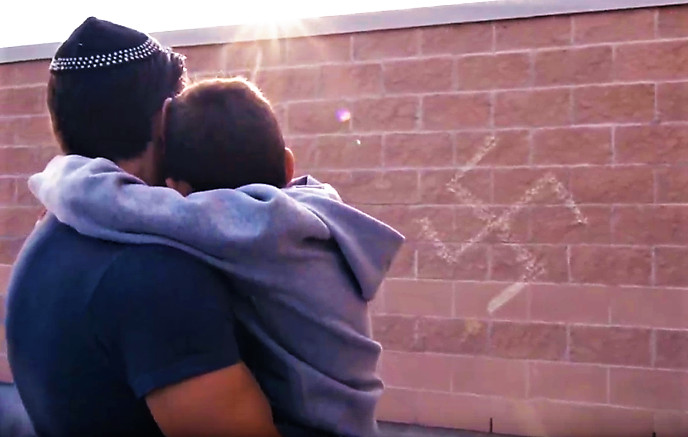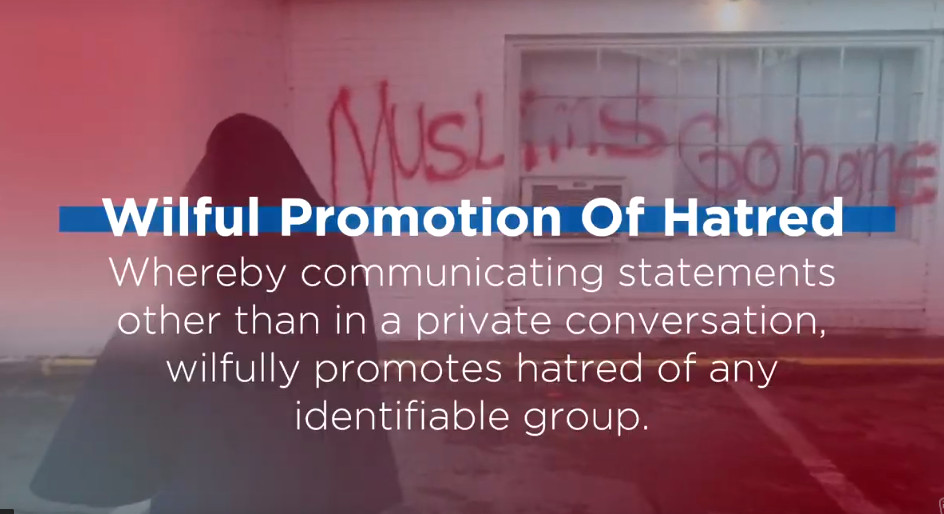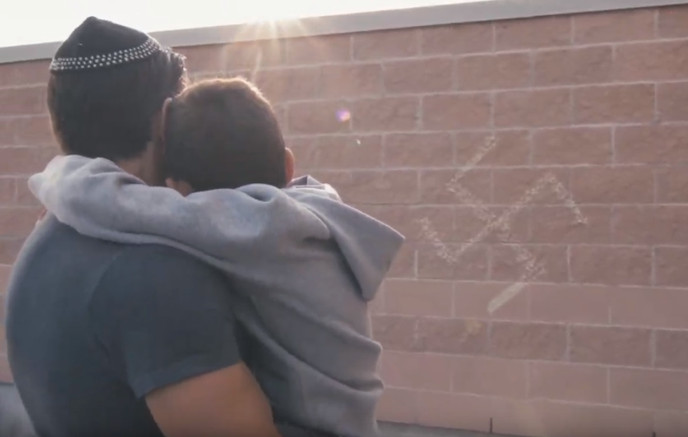
Peel continues to see increase in hate-motivated crimes
Digital echo chambers like social media are creating expanding spaces to fuel hate crimes in communities, and Peel is not immune to this harrowing reality.
A report presented to the Peel Police Services Board (PPSB) on June 23 revealed the number of reported hate-motivated crime offences across Mississauga and Brampton increased by seven percent (from 115 to 123) between 2021 and 2022. While this was significantly lower than the 27 percent national increase observed in 2021 according to Statistics Canada’s police reported crime data, the rise of hate-motivated crimes in Peel is a cause for concern in one of the most pluralistic places in the world.
“We serve the most diverse community in the country and to be quite honest with you, we should be, in many ways, leaders in this space,” Peel Regional Police (PRP) Inspector of Community Safety and Wellbeing Services Feras Ismail told the board at its June meeting.
According to the Region of Peel’s Census Information Hub, Peel’s population is 1.4 million with visible minority populations making up over 69 percent of the total population (they make up just over 70 percent of the population of Mississauga and Brampton, the only two municipalities patrolled by Peel police; Caledon is policed by the OPP). The 2021 census data show the top five racialized groups in Peel are South Asian, Black, Chinese, Filipino and Arab.
Ismail, who also works in the force’s Equity and Inclusion Bureau, noted of the 123 reported hate-motivated crimes, 30 percent resulted in charges. Offences ranged from mischief — the highest occurrence — followed by uttering threats and assaults.
“Hate-motivated crimes and incidents impact our community members in several negative ways. The residual impact of such crimes and incidents often results in feelings of fear, marginalization, and alienation,” the report states.
Actions involving violence or threats of violence rose from 47 in 2021 to 64 in 2022, marking a 36 percent increase. Among these violent acts and threats, the majority were verbal threats (48 percent), followed by physical assaults (38 percent), and assaults with a weapon (11 percent). Peel’s Black communities continue to experience the highest victimization numbers (this does not include acts that are not reported), with 45 percent of all hate-motivated actions that are mischief related directed at Black residents. South Asian community members experienced the second highest victimization numbers, which decreased by 45 percent between 2021 and 2022.
These numbers, however, are skewed and do not paint the whole picture. The data presented is based on reported occurrences, meaning statistics like those that came to the board on June 23 do not capture all acts of hate crime in Peel, as many go unreported. The annual update highlights some of the reasons for under-reporting, which include doubts over the police’s willingness to act and the potential for being re-victimized. In 2022, hate crimes represented 0.28 percent of the total crimes reported to Peel police, but it was made clear this figure is skewed due to the lack of reporting.
Ismail told police board members that hate related crimes are among the most underreported crimes globally.
According to a Statistics Canada report on the disproportionate harm of hate crimes in Canada, “a central deficiency of all criminal justice statistics is that a proportion of incidents are never reported to the police. This proportion (known as the ‘Dark Figure’ of crime) varies from offence to offence and may run as high as 95 percent for certain crimes.” The report points to the high percentage of offences that do not come forward to police due to several factors including: victims may fear additional emotional stress due to the process of being questioned; victims of racially motivated hate crimes may be apprehensive about seeking help from a criminal justice system viewed by some as unhelpful toward racialized community members; and the sensitive nature of hate crimes directed at 2SLGBTQIA+ community members.
Hate related crimes are among the most underreported crimes not just in Peel, but globally, Peel Police detective Feras Ismail told the Police Services Board at its June meeting.
(The Pointer files)
“We don’t know what we don’t know,” Ismail said. “The data speaks volumes and unless they make that phone call we can’t provide that support. There’s very little we can do and we aren’t actually going to be able to truly understand the magnitude of these issues until those calls are made.”
Adding to this gap (not to be confused with hate-motivated crime), hate-motivated “incidents”, meaning occurrences that do not rise to the threshold of a Criminal Code offence, are also increasing. These incidents involve behaviours that, though influenced by hate or bias, are not criminal acts, for example, discriminatory or hostile speech. Ismail said these types of acts can, however, be even more insidious.
When a crime occurs there’s accountability and PRP can proceed with an investigation and lay charges, whereas hate related incidents like uttering slurs “are often difficult and delicate to balance,” as they do not rise to the level of a crime but are still something that could impact a person or family. Ismail said although the “comments that are uttered actually do create a climate of fear and do impact people in a persuasive and negative way,” no one is held accountable and communities that are impacted have historically been forced to suppress that information.
“We understand as a service and we understand as a community that they are just as harmful and at times if not more harmful.
“We as police, we’re not going to arrest our way out of this,” Ismail warned. “This is beyond police. This is an issue that is really driven by a lot of social factors. These are issues that we are collectively needing to be speaking on and this is not the time to take a step back for fear of economic repercussions.”

A slide presented by Peel Police to its board in 2019, showing an example of a hate crime against the Muslim community in the region.
(PRP)
Advocacy groups say the numbers are disturbing, but no longer shocking given the continued upward trend.
Steven Zhou, spokesperson for the National Council of Canadian Muslims (NCCM), said he’s not surprised that the overall numbers for certain regions, like Peel, are generally increasing. He said the organization has been noticing a steady increase over the last half-decade. As these acts continue to rise, signalling a society moving backward, Zhou said there is no one “silver bullet answer” to unlock what the major social problems of our time are.
“We live in very polarized times. We live in a time that follows a real increase in participation by Canadians in online hate,” he told The Pointer.
“I think we have been playing catch up in terms of policy and how to deal with that. And at least for the Muslim community, our community has been sounding the alarm about this for quite some time. And these numbers don't surprise us because of what we've had to deal with.”
The Region of Peel is one of the most diverse communities in the country, with its racialized groups making up over 69 percent of the total population.
(The Pointer files)
Hate-motivated crimes do not just impact racialized communities; those who identify with the diverse range of 2SLGBTQIA+ residents continue to face hate. The PPSB report found crimes influenced by race/nationality decreased from 90 in 2021 to 85 in 2022. Following that trend, acts motivated by religion decreased from 36 in 2021 to 30 in 2022. Meanwhile, crimes motivated by sexual orientation stayed the same from 2021 to 2022.
Of the increases in hate-motivated crimes across Canada, data from Statistics Canada’s 2021 numbers on police-reported hate crime revealed there was a 64 percent increase (423 incidents) in hate crimes targeting individuals over their sexual orientation. Police-reported hate crimes based on sexual orientation rose nearly 60 percent between 2019 and 2021 to the highest level in five years, data from Statistics Canada found. Data show there has been a notable rise in hate crimes over the past few years, with threats and protests against drag queens and transgender people in particular. This is a harsh reality these community members face globally.
The data showed the 423 hate crimes targeting sexual orientation rose well above the previous peak of 265 in 2019. Roughly 8 in 10 (77 percent) of these crimes specifically targeted the gay and lesbian community, while the remainder targeted those with bisexual orientation (two percent) and other sexual orientations, such as asexual, pansexual or other non-heterosexual orientations (11 percent). The remaining 10 percent were incidents where the targeted sexual orientation was reported as unknown.
Data from Peel police also examined religion as motivation for hate crimes, which revealed 25 percent of hate-motivated crimes reported to the force in 2022 targeted religious groups as either the sole motivator or in combination with another motivator. Jewish and Christian community members reported the highest victimization numbers.
A 2022 Annual Audit of Antisemitic Incidents from B’nai Brith, an independent Jewish human rights organization, revealed the total incidents recorded for the year was 2,769, down 1.1 percent from the 2,799 incidents reported in 2021. This is the first year-over-year decrease the organization has seen since 2015, when the audit reported a 21.5 percent decline from 2014. The Jewish community sounded the alarm in 2012 when the organization’s annual audit recorded 1,345 antisemitic incidents, the highest ever since the organization first began auditing in the ‘80s. Now, 10 years later, the number is an alarming 105.9 percent higher than the figure reported in 2012, and the second highest in 40 years.

An image used by Peel Police to show a common form of antisemitic hate crime.
(PRP)
Beyond the impact of mental health, there are other effects that are making this a reality, Ismail said, including an increase in social polarization as a byproduct of the COVID pandemic.
“The rise of populist politics and rhetoric along with the dissemination of misinformation through so many social media channels and so many of our people, particularly our youth, are being drawn into these digital echo chambers where a lot of these narratives are just perpetuated and there is no counter there,” he explained.
“When you hear it enough and when you feel that it's been socialized enough and when that language and behaviour has been normalized enough you can see the byproducts of what’s happening.”
B’nai Brith reports the nature of antisemitism is changing as well, with social media becoming the largest medium for antisemitic narratives, “giving purveyors of hate a global audience and limitless reach.” B’nai Brith’s data indicated that online hate has more than doubled over the past five years with many of these incidents consisting of open threats of violence, murder or genocide against the Jewish community. Data show the dynamic is changing and hate has increasingly moved online. Of the 2,769 hate-related incidents directed at Jewish people that were recorded across Canada last year, 2,056 — 74.3 percent — occurred online. The report also notes “Canada’s laws have failed to keep pace with the explosion of antisemitism in online spaces, allowing this phenomenon to go unchecked.”
Social media is becoming the largest medium for hate-related narratives with online hate having more than doubled over the past five years.
(Screenshot from 2022 Annual Audit/B’nai Brith)
Richard Robertson, research manager with B’nai Brith, said the organization is seeing online hate rapidly rising year over year. This rise, he explained, is likely what's facilitating the larger growth of hate crimes against the community, not just in Peel, but across the province and in Canada.
“One of the problems with online hate is that online hate is a precursor to other forms of hate. It's a way in which hateful messages can be disseminated, so it helps to spread the rhetoric of hate and to create an environment where other crimes, hateful crimes, and non-criminal acts of hate can occur,” he told The Pointer.
“Our virtual world and the ease in which we can communicate within it enables hate groups or hateful individuals to connect and spread their ideologies with an east that is unprecedented.”
The organization said it has not seen a successful response to the proliferation of hate online, something Robertson said is a “balancing act” between protecting individuals’ freedom of expression, versus protecting vulnerable groups. He noted the organization is still waiting on the federal government to enact legislation that effectively balances both, hand in hand with a need for social media companies to take responsibility and enact policies that will effectively limit the spread of hatred online that community members are being targeted by.
Due to the scale of digital outlets like Facebook and Twitter, and the potential of new platforms such as Threads (which just launched this week by Meta, the company that owns Facebook and Instagram), Robertson said it's almost impossible to truly quantify the cases.
As someone who works in the industry and has witnessed the continual increase in hate crimes, Robertson said the numbers have become the norm. While the statistics for 2023 are not in yet, the organization predicts these types of crimes are not going to decrease.
“I'm not shocked, but the numbers are concerning. They're extremely troubling and to see them continue to rise when it comes to online hate and to see the overall numbers not dissipating, despite the efforts of our organization and others. It's deeply concerning.”
With social media fueling hate, Zhou questions if society is willing to explore and accept that there is an environment, an ecosystem that exists in Canada, and in other societies, that directly plays on people's attitudes, values and identity. These sometimes subtle environmental dimensions of communication platforms are created by the way we speak, the ideas we offer to platforms, our tone, who we follow, what we like, spread and share, or the lack of what we do while using certain platforms.
“Now that news media is gradually phased by influencer media, or various kinds of social media, the platforms are curated to our ideological liking. So we don't really have to look at anything else,” he said.
“There's tremendous mistrust of media chronically going on for years now. So that makes it very difficult to have an objective shared reality. That's another thing that contributes to [hate-crime] is just people sitting behind their screens and looking at whatever they want to look at [which is] mostly tailored to their ideological or worldview and their liking.”
Adding to these complex communication dimensions that can fuel hate crimes, Zhou said there has been an increase in recent years in Canada around popularizing anti-Muslim narratives, like anti-refugee sentiment or anti-immigrant sentiment — a lot of which has played out online — in a range of countries, including Canada. To a certain extent, this has also played out “in the halls of power, with politicians trying to exploit this kind of rhetoric or ideologies, in order to get votes, he said.
“I think that kind of politicking is probably here to stay, it is a mainstay in terms of just populist politics in general, in Canada, in the United States, and that is getting worse. Polarization on those issues are getting worse and various social media elements don't help either.”
Email: [email protected]
Twitter: @mcpaigepeacock
At a time when vital public information is needed by everyone, The Pointer has taken down our paywall on all stories to ensure every resident of Brampton and Mississauga has access to the facts. For those who are able, we encourage you to consider a subscription. This will help us report on important public interest issues the community needs to know about now more than ever. You can register for a 30-day free trial HERE. Thereafter, The Pointer will charge $10 a month and you can cancel any time right on the website. Thank you
Submit a correction about this story


